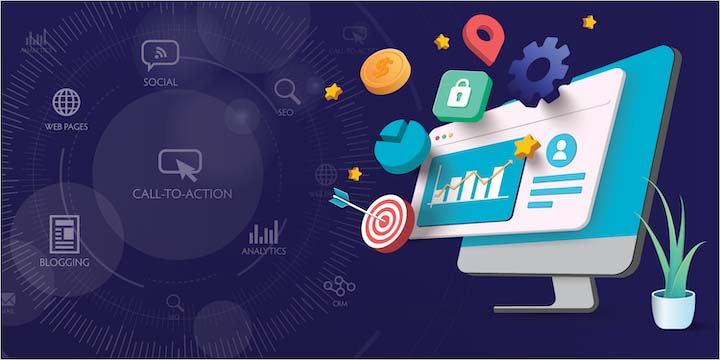Last updated on May 2nd, 2024 at 06:08 pm
Influencer marketing platforms have emerged as a potent channel for reaching and engaging with target audiences. However, the key to a successful influencer marketing campaign lies in harnessing the power of influencer analytics tools. In this comprehensive guide, we will delve deep into the world of influencer analytics tools and how they can supercharge your influencer marketing efforts.
The Rise of Influencer Marketing Platforms
Influencer marketing has rapidly gained prominence in recent years. It’s no longer a novel concept but a well-established marketing strategy that consistently delivers results. Brands of all sizes have recognized the potential of influencers marketing to increase brand awareness, drive engagement, and boost sales.

Central to the success of influencer marketing is the advent of influencer marketing platforms. These platforms serve as a bridge between brands and influencers, making the entire process more efficient and scalable. They provide a marketplace where brands can discover and collaborate with influencers, streamline campaign management, and access analytics that allow for data-driven decision-making.
Understanding Influencer Analytics Tools
In the world of influencer marketing, data is king. Brands and marketers need data-driven insights to optimize their campaigns and ensure a high return on investment (ROI). This is where influencer analytics tools come into play.
Influencer analytics tools are software solutions that allow brands and marketers to collect, analyze, and interpret data related to their influencer marketing efforts. These tools offer a range of features that empower users to make informed decisions about influencer selection, campaign strategy, and performance evaluation. Let’s explore some of the key components and functionalities of influencer analytics tools:
1. Audience Analysis
Influencer analytics tools provide a comprehensive view of an influencer’s audience. This includes demographics, interests, location, and more. By understanding an influencer’s audience, brands can determine if it aligns with their target audience, ensuring that the campaign reaches the right people.
2. Engagement Metrics
Metrics such as likes, comments, shares, and click-through rates (CTRs) are vital for assessing an influencer’s ability to engage their audience. These metrics help brands gauge an influencer’s content effectiveness and the potential impact of their endorsements.
3. Follower Growth and Authenticity
Analyzing an influencer’s follower growth over time can reveal whether their audience is genuinely interested in their content. Rapid spikes in followers or irregular growth patterns may indicate fake or purchased followers, which can negatively impact the authenticity of an influencer.
4. Content Performance
Influencers analytics tools enable brands to assess the performance of individual posts or content pieces. They can identify which posts drive the most engagement, allowing for a deeper understanding of the content that resonates with the audience.
5. Competitor Benchmarking
Brands can compare the performance of multiple influencers, aiding in the selection process. It’s also possible to benchmark influencers against competitors, helping brands understand how their marketing efforts stack up in the industry.
6. Campaign ROI Measurement
Ultimately, influencer analytics tools allow brands to assess the ROI of their marketing campaigns. They help calculate the value generated in terms of sales, brand awareness, or any other key performance indicators (KPIs) set for the campaign.
The Benefits of Utilizing Influencer Analytics Tools
The utilization of influencer analytics tools within marketing platforms offers a plethora of advantages for brands and marketers:
1. Data-Driven Decision Making
In the age of digital marketing, data is the foundation of successful strategies. Influencer analytics tools provide the data necessary to make informed decisions about influencer selection, campaign strategies, and budget allocation.
2. Enhanced Targeting
By understanding an influencer’s audience and performance metrics, brands can precisely target their campaigns to reach the most relevant and engaged audience, increasing the chances of conversion.
3. Optimized Campaigns
Brands can fine-tune their campaigns in real-time based on the data provided by influencer analytics tools. This agility enables quick adjustments to improve campaign performance.
4. ROI Measurement
Influencer marketing platforms equipped with analytics tools facilitate the tracking of campaign performance and ROI. This ensures that marketing efforts are contributing positively to the bottom line.
5. Minimized Risk
Influencer analytics tools help mitigate the risks associated with marketing with them by providing insights into an influencer’s credibility, authenticity, and performance history.
6. Streamlined Collaboration
Influencer marketing platforms with analytics tools offer features for streamlined communication and collaboration between brands and influencers. This minimizes misunderstandings and ensures seamless campaign execution.
The Top Influencer Analytics Tools
As the importance of influencer analytics tools continues to grow, various platforms and tools have emerged to meet the demand. Here are some of the top influencer analytics tools in the market:
1. Hootsuite
Hootsuite is a versatile social media management platform that offers analytic features. It provides data on post performance, audience engagement, and more.
2. Upfluence
Upfluence is an all-in-one influencer marketing platform that includes powerful analytics tools. It offers a robust suite of features, including audience demographics, engagement metrics, and campaign performance tracking.
3. AspireIQ
AspireIQ focuses on influencer analytics and campaign management. It helps brands identify the right influencers and track the performance of influencer marketing campaigns.
4. Socialbakers
Socialbakers is a comprehensive social media marketing platform with influencer analytics capabilities. It allows brands to measure the impact of influencer partnerships and optimize their strategies.
5. Traackr
Traackr is designed to help brands find the most relevant influencers for their niche. It provides detailed audience insights and tracks influencer performance.
How to Choose the Right Influencer Analytics Tool
Selecting the right influencer analytics tool for your influencer marketing is a crucial decision. Here are some factors to consider:

1. Compatibility
Ensure that the tool is compatible with your influencer marketing platform and integrates seamlessly with your existing systems.
2. Features and Metrics
Evaluate the range of features and metrics offered by the tool. Make sure it aligns with your specific analytics needs and campaign goals.
3. User-Friendly Interface
A user-friendly interface makes it easier for your team to access and interpret the data. Choose a tool with an interface that is intuitive and easy to navigate.
4. Pricing and Scalability
Consider your budget and the scalability of the tool. Will it meet your needs as your influencer marketing campaigns grow?
5. Customer Support
Quality customer support is essential. Look for a tool with responsive customer support to assist with any issues or questions.
6. Data Security
Data security is paramount. Ensure that the tool follows industry standards for data protection to safeguard sensitive information.
Real-World Success with influencer marketing
To emphasize the real-world impact of influencer analytics tools, let’s explore a couple of case studies:
Case Study: Glossier
Glossier, a well-known beauty business, successfully used influencer marketing platform as part of their overall marketing plan. Glossier looks at influencer metrics, engagement rates, and audience demographics with analytics tools to find the best influencers for their projects. This data-driven approach makes sure that Glossier’s partnerships with influencers reach the right people and have the biggest effect. To see how well their influencer marketing is working, Glossier also uses analytical tools to look at key performance factors such as brand mentions, website traffic, and revenue that can be traced back to collaborations with influencers. Data analytics are used in Glossier’s influencer marketing strategy to help them make choices based on facts, make their campaigns better, and get a better return on their investment. Glossier’s influencer marketing is improved by data analytics, which lets them connect with their audience and boost brand awareness and growth.
Check here for more case studies.
The Future of Influencer Analytics Tools
Influencer analytics tools are continually evolving to meet the ever-changing needs of brands and marketers. The future of these tools promises exciting developments, including:

1. Artificial Intelligence (AI) Integration
AI will play a more significant role in influencer analytics, providing predictive analytics, sentiment analysis, and personalized campaign recommendations.
2. Blockchain for Transparency
Blockchain technology will enhance the authenticity and transparency of influencer marketing, helping to verify an influencer’s followers and ensure the integrity of data.
3. Cross-Channel Analytics
Influencer analytics tools will expand to cover multiple marketing channels, allowing brands to assess the impact of influencer marketing across all touchpoints.
4. Interactive Dashboards
User-friendly, interactive dashboards will become the norm, making data interpretation and decision-making even more accessible.
Conclusion
In the world of influencer marketing, influencer analytics tools are the driving force behind successful campaigns. These tools provide data-driven insights, enhance targeting, and optimize ROI. Brands and marketers can no longer afford to overlook the power of influencer analytics within their influencer marketing platforms.
As you navigate the landscape of Influencer Marketing Platform, remember that selecting the right analytics tool is as crucial as choosing the right influencers. The future holds even more exciting possibilities as these tools continue to evolve, leveraging AI, blockchain, and cross-channel analytics to supercharge your influencer marketing efforts.
Unlock the potential of influencer analytics tools and watch your influencer marketing campaigns soar to new heights, ultimately delivering a powerful impact on your brand’s success.

